MR. GAGA director Tomer Heymann will participate in Q&A’s after the 7:20pm screenings at the Monica Film Center Friday, Feb 10 and Saturday, Feb 11; and after the 1:10pm screening on Saturday, Feb 11 at the Playhouse.
SEA OF HOPE Q&A Opening Night at the Monica Film Center.
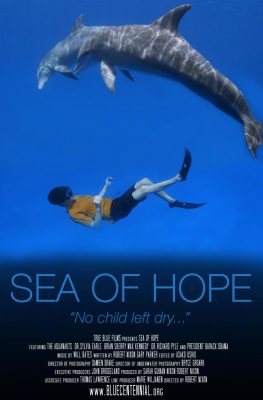 SEA OF HOPE explorer and narrator Max Kennedy will participate in a Q&A following the Friday, January 13 7:50 PM showing at the Monica Film Center.
SEA OF HOPE explorer and narrator Max Kennedy will participate in a Q&A following the Friday, January 13 7:50 PM showing at the Monica Film Center.
LAEMMLE LIVE: New Series Launch with Samohi Chamber Orchestra – Sunday January 22, 2017
Don’t miss the debut of LAEMMLE LIVE! Our new live performance series at the Monica Film Center kicks off Sunday, Jan. 22 with SAMOHI CHAMBER ORCHESTRA and special guest host RICH CAPPERELA of KUSC.
Santa Monica High School’s 18-piece string orchestra will perform pieces by luminaries such as Villa-Lobos, Beethoven and Elgar. The orchestra is directed by Joni Swenson and Jason Aiello.

We are delighted to be launching Laemmle Live with these talented youngsters from just up the street. Please help us welcome them as we celebrate the launch of this new program.
RSVP using Eventbrite or Facebook.
This is a free event!
EVENT DETAILS
Sunday, Jan. 22, 2017
11:00 AM
Monica Film Center
Our January-March Culture Vulture Schedule is Set!
Dear opera, ballet, fine art and live theater buffs, we have completed the schedule for our weekly Culture Vulture series, January, February and March 2017 and we have got some wonderful things to show you. As you may or may not know, we screen these every Monday night at 7:30 and Tuesday afternoon at 1 at the Playhouse 7 in Pasadena, the Town Center 5 in Encino, the Claremont 5 in Claremont, the Ahyra Fine Arts and the Monica Film Center in Santa Monica. The full schedule is below and at https://www.laemmle.com/culturevulture.
January 9 & 10: THE GOLDEN AGE from the Bolshoi Ballet
A satire of Europe during the Roaring 20s, THE GOLDEN AGE makes for an original, colorful, and dazzling show with its jazzy score and music-hall atmosphere. This ballet that can only be seen at the Bolshoi has everything to it: mad rhythms, vigorous chase scenes, and decadent cabaret numbers. With its passionate love story featuring beautiful duets between Boris and Rita, the Bolshoi dancers plunge into every stylized step and gesture magnificently.
January 16 & 17: NO MAN’S LAND from the National Theatre
Ian McKellen and Patrick Stewart star Sean Mathias’ acclaimed production of NO MAN’S LAND, one of the most brilliantly entertaining plays by Harold Pinter. One evening, two aging writers, Hirst and Spooner, meet in a pub and continue their drinking into the night at Hirst’s stately house nearby. As the pair become increasingly inebriated, and their stories more unbelievable, the conversation soon turns into a revealing power game, further complicated by the intrusion of two sinister younger men.
https://www.youtube.com/watch?v=i9RA6B9FOKM
January 23 & 24: THE CURIOUS WORLD OF HIERONYMOUS BOSCH from the Noordbrabants Museum
Who was Hieronymus Bosch? Why do his strange and fantastical paintings resonate with art lovers now more than ever? THE CURIOUS WORLD OF HIERONYMOUS BOSCH features the critically acclaimed exhibition ‘Visions of a Genius’ at the Noordbrabants Museum in the southern Netherlands, which brought the majority of Bosch’s paintings and drawings together for the first time to his home town of ‘s-Hertogenbosch and attracted almost half a million art lovers from all over the world.
January 30 & 31: CARVALHO’S JOURNEY
A real life 19th century American western adventure story, CARVALHO’S JOURNEY tells the extraordinary story of Solomon Nunes Carvalho (1815-1897), an observant Sephardic Jew born in Charleston, South Carolina, and his life as a groundbreaking photographer, artist and pioneer in American history.
February 6 & 7: SAMSON ET DALILA from l’Opéra de Paris.
Based on the biblical story, Saint-Saëns’s 1877 opera would not be performed at the Palais Garnier until fifteen years later. This first Parisian performance in 1892 included the hitherto unperformed “Dance Of The Priestesses.” Nevertheless, it became one of the most performed French operas in the world, together with Faust and Carmen. Conducted by Philippe Jordan, this new production brings back a repertoire masterpiece that has not been performed at the Paris Opera for twenty-five years.
February 13 & 14: FEELINGS ARE FACTS: THE LIFE OF YVONNE RAINER
Feelings Are Facts: The Life of Yvonne Rainer chronicles the defiant, uncompromising, and highly influential ideas of postmodern choreographer and filmmaker Yvonne Rainer. Over the course of her career, she revolutionized modern dance, generated what later became known as performance art, and changed the basic tenets of experimental filmmaking – all during a time when women were largely ignored in the art world.
February 20 & 21: AMADEUS from the National Theatre
Lucian Msamati (Luther, Game of Thrones, NT Live: The Comedy of Errors) plays Salieri in Peter Shaffer’s iconic play, captured live at the National Theatre, and with live orchestral accompaniment by Southbank Sinfonia. Wolfgang Amadeus Mozart, a rowdy young prodigy, arrives in Vienna, the music capital of the world – and he’s determined to make a splash. Awestruck by his genius, court composer Antonio Salieri has the power to promote his talent or destroy his name. Seized by obsessive jealousy he begins a war with Mozart, with music, and ultimately, with God.
February 27 & 28: I, CLAUDE MONET
From award-winning director Phil Grabsky comes this fresh new look at arguably the world’s favorite artist – through his own words. Using letters and other private writings I, CLAUDE MONET reveals new insight into the man who not only painted the picture that gave birth to impressionism but who was perhaps the most influential and successful painter of the 19th and early 20th centuries.
March 6 & 7: UN BALLO IN MASCHERA from the Bayerische Staatsoper
The Bavarian State Opera’s former music director Zubin Mehta returned to the fabled house, where his image in bronze adorns one of the foyers, to celebrate his 80th birthday by conducting Verdi’s middle-period masterpiece for the first time in a staged production. His remarkable cast includes soprano Anja Harteros singing Amelia for the first time and “filling every note with Verdian intensity;” tenor Piotr Beczala as a “visually and vocally dashing Riccardo;” and George Petean as an “exemplary” Renato (Neue Musikzeitung).
March 13 & 14: WOOLF WORKS from the Royal Opera House Ballet
The first revival of Wayne McGregor’s critically acclaimed ballet triptych to music by Max Richter, inspired by the works of Virginia Woolf and starring Alessandra Ferri and Mara Galeazzi.
March 20 & 21: SAINT JOAN from the National Theatre
Joan: daughter, farm girl, visionary, patriot, king-whisperer, soldier, leader, victor, icon, radical, witch, heretic, saint, martyr, woman. From the torment of the Hundred Years’ War, the charismatic Joan of Arc carved a victory that defined France. Bernard Shaw’s classic play depicts a woman with all the instinct, zeal and transforming power of a revolutionary. Josie Rourke (Coriolanus, Les Liaisons Dangereuses) directs Gemma Arterton (Gemma Bovery, Nell Gwynn, Made in Dagenham) as Joan of Arc in this electrifying masterpiece.
March 27 & 28: THE ARTIST’S GARDEN: AMERICAN IMPRESSIONISM from the Florence Griswold Museum
American impressionism took its lead from French artists like Renoir and Monet but followed its own path that over a thirty-year period reveals as much about America as a nation as it does about a much-loved artistic movement. The story of American impressionism is closely tied to a love of gardens and a desire to preserve nature in a rapidly urbanizing nation. Traveling to studios, gardens and treasured locations throughout the Eastern United States, UK and France, this mesmerizing film is a feast for the eyes.
Hung Viet Nguyen: Sacred Landscapes
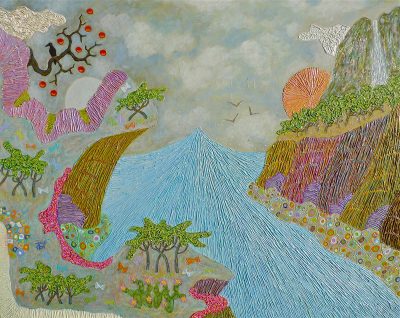
Art in the Arthouse welcomes SACRED LANDSCAPES, an exhibit by artist HUNG VIET NGUYEN, on display at the Monica Film Center from Dec 2016 – Feb 2017.
Curated by Tish Laemmle, Sacred Landscapes showcases a large selection of Nguyen’s majestic paintings, primarily landscapes and captivating abstract works. The work transports you into the mind of the artist who has an enigmatic connection to nature. Painting from memory, Nguyen renders an impressive amount detail in stunning and unexpected compositions that seem to suspend reality. Viewing his work has a spiritual quality that can only be experienced in person.
Hung Viet Nguyen was born in Vietnam in 1957 and studied biology at the Science University in Saigon. After relocating to the U.S. in 1982, Nguyen transitioned careers, finding work as an illustrator, graphic artist and designer.
He developed his artistic skills in an independent fashion, carefully studying a variety of traditional 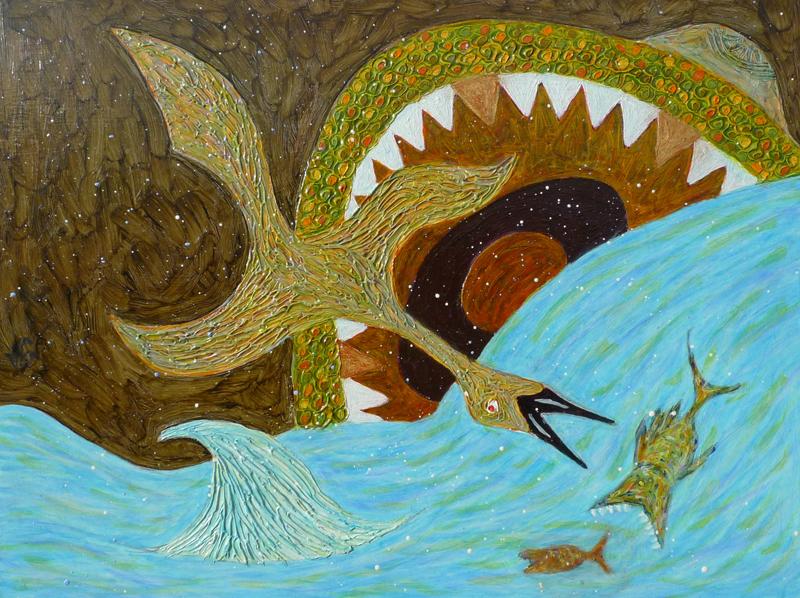 Eastern and Western forms, media and techniques. Nguyen’s complex, labor intensive investigations of oil paint reveal a
Eastern and Western forms, media and techniques. Nguyen’s complex, labor intensive investigations of oil paint reveal a
mastery of texture. While portions of Nguyen’s work suggest the influence of traditional art forms such as woodblock prints, Oriental scroll paintings, ceramic art, mosaic, and stained glass, his ultimate expression as an artist asserts a more contemporary sensibility.
Having been deeply affected by Nguyen’s work – “it speaks to the soul” – Art in the Arthouse curator Tish Laemmle was inspired to bring Sacred Landscapes to life at the Monica Film Center for the enrichment of the movie-going public.
Nguyen’s paintings have been exhibited at galleries, cultural art centers, and museums, juried by museums including LACMA and the MOCA. Honors include the Juror’s Choice Awards, 2013, and the San Diego Art Institute Biennial International Award Exhibition, 2015.

Critic’s Reviews of Nguyen:
Miracle of Miracles … Fiddler Sing-a-Long + First Night of Chanukah Celebration!
*** FIDDLER UPDATES (skip to main article)
We’re pleased to announce an dynamic and eclectic line-up of Fiddler Hosts for 2016!
Ahrya Fine Arts
Cantor Phil Baron – of Valley Beth Shalom – BUY TIX
BONUS! – BARBARA ISENBERG will be on hand to sign copies of her book TRADITION!: The Highly Improbable, Ultimately Triumphant Broadway-to-Hollywood Story of Fiddler on the Roof, the World’s Most Beloved Musical.
Claremont 5
Cantor Paul Buch – of Temple Beth Israel – BUY TIX
NoHo 7
Susan Edwards Martin – Broadway star, entertainer – BUY TIX
Playhouse
Jason Moss – of Jewish Federation of the San Gabriel and Pamona Valleys – BUY TIX
Royal
Eli Batalion – actor, star of Yidlife Crisis – BUY TIX
Town Center 5
Gustavo Bulgach – musician, bandleader of Klezmer Juice – BUY TIX
Jump below to find out more about our hosts.
—————————————————–
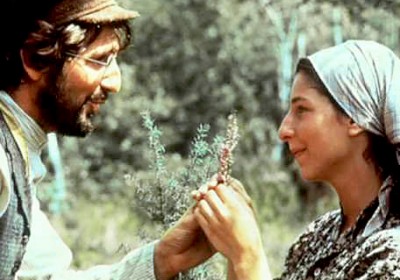 Will the matchmaker make you “the perfect match?” There’s only one way to find out … join us this year for our 9th Annual Fiddler on the Roof Christmas Eve Sing-a-Long … plus FIRST NIGHT OF CHANUKAH CELEBRATION!
Will the matchmaker make you “the perfect match?” There’s only one way to find out … join us this year for our 9th Annual Fiddler on the Roof Christmas Eve Sing-a-Long … plus FIRST NIGHT OF CHANUKAH CELEBRATION!
(Scroll down to watch the event trailer. For tickets, visit Laemmle.com/Fiddler).
The rare concurrence of Christmas Eve and the first night of Chanukah adds a new wrinkle to our tradition this year, enabling the community to come together in celebration of the Jewish holiday. “This year we can sing from the rooftops … and light the Chanukah Menorah!” comments Greg Laemmle.
To accommodate demand, the popular Fiddler program has been extended to six venues including the newly re-opened AHRYA FINE ARTS art deco movie palace in Beverly Hills.
In addition to exuberant movie and song, the evening will feature TRIVIA with PRIZES being awarded to Fiddler buffs with the quickest recall. Dressing in COSTUME is not required, but highly encouraged! Who knows, perhaps the best costume will garner a prize? That will be up to the emcee.
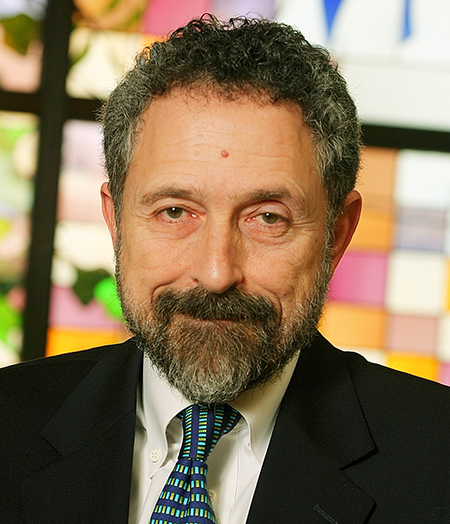
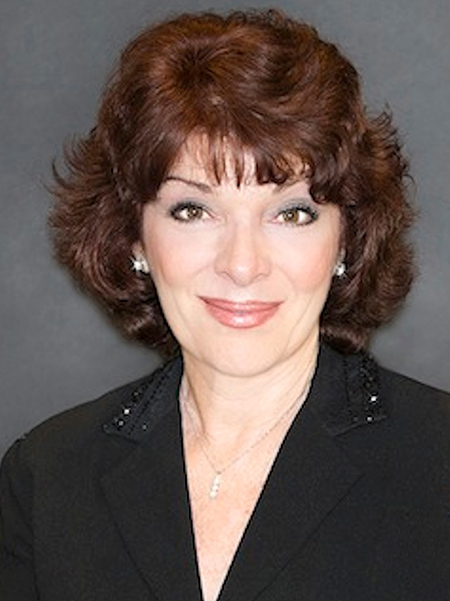
We’re excited announce several new hosts this year. These include Broadway performer Susan Edwards Martin, Klezmer musician Gustavo Bulgach, comedian and star of YidLife Crisis, Eli Batalion, and community leader Jason Moss. Returning are Cantor Paul Buch of Temple Beth Israel and Cantor Phil Baron of Valley Beth Shalom, the latter to be master of ceremonies at the Ahrya Fine Arts.
Jump down to get more info on each of our hosts.
Our own Greg Laemmle is enthusiastic as ever about the Fiddler experience, in part due to it having one of the best movie scores of all time, declaring that “Christmas Eve isn’t just Chinese food anymore!” Furthermore, “We welcome all those in the community who are looking for an alternative Christmas eve experience … and this year, a different first night of Chanukah to boot!”
He continues, “This is your once-a-year chance to be the star of the shtetl. Join voices with friends and neighbors and sing your heart out alongside Fiddler’s screen legends,”?he continues. “And it’s okay if you haven’t memorized all the songs. We provide the lyrics.”
Song highlights include the iconic “TRADITION”, “IF?I?WERE?A?RICH?MAN”, “TO?LIFE”, “SUNRISE SUNSET”, “DO?YOU LOVE ME?”?and “ANATEVKA”, among many, many more.
Don’t miss the buggy! Those who wish to attend the program are advised to purchase tickets in advance as the program has traditionally sold to capacity.
See you in the shtetl…
https://www.youtube.com/watch?v=CnuyNaOEBt4&feature=youtu.be
Fiddler Hosts – 2016
 Cantor PHIL BARON at the Ahrya Fine Arts (Beverly Hills)
Cantor PHIL BARON at the Ahrya Fine Arts (Beverly Hills)
Cantor PHIL BARON of Temple Valley Beth Shalom in Encino comes to us courtesy of community partner JEWISH HISTORICAL SOCIETY (JHS) and the BREED STREET SHUL. Baron is the son of a violinist and the grandson of a Vilna rabbi. Before becoming a cantor, he took a successful detour into children’s entertainment, where he had over 300 original songs recorded – nearly 200 of these by the Walt Disney Co. He co-created two television series for Jewish children, Bubbe’s Boarding House, and the multiple award-winning series Alef…Bet…Blast-off! As a vocalist he has been featured with the Los Angeles Jewish Symphony, the Cleveland Orchestra and the New Orleans Philharmonic.
 SUSAN EDWARDS MARTIN at the NoHo 7 (N. Hollywood)
SUSAN EDWARDS MARTIN at the NoHo 7 (N. Hollywood)
Broadway star SUSAN EDWARDS MARTIN will represent partner Temple Beth Hillel at our NoHo 7 venue. A star of Broadway, Martin is an accomplished singer, musician, actress and comedienne who originated the role of ‘Lady Blue’ in HARVEY FIERSTEIN’s Tony Award-winning play “Torch Song Trilogy.” She has also appeared in many other Broadway and Off-Broadway productions such as “Bubbling Brown Sugar,” “The Suicide,” and the long-running musical comedy “Scrambled Feet.” Numerous television credits include a recurring role on “Days of our Lives,” and guest appearances on “NYPD Blue,” “Designing Women,” and “Columbo,” among many others. Martin is currently creating a new original musical, “Unlimited” based on her personal story of growing up in Long Island and her ensuing life in show business.
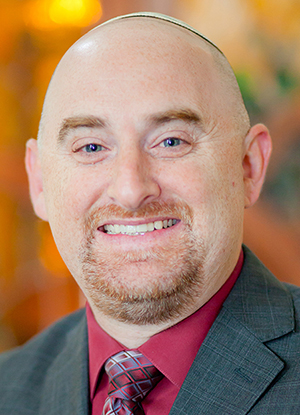 JASON MOSS at the Playhouse 7 (Pasadena)
JASON MOSS at the Playhouse 7 (Pasadena)
Executive Director of the Jewish Federation of the Greater San Gabriel and Pomona Valleys JASON MOSS will be our host at the Playhouse 7 in Pasadena. Under his leadership, the Federation has doubled its programming with the creation of such programs as the Cultural Arts Program, PJ Library, a nationally recognized program to reach and connect with unaffiliated Jewish families. In addition, Moss will soon launch JLife SGPV, a lifestyle magazine celebrating Jewish life in the San Gabriel and Pomona Valleys.
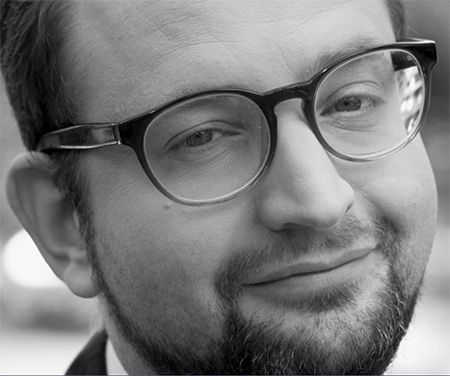 ELI BATALION at the Royal Theatre (West L.A.)
ELI BATALION at the Royal Theatre (West L.A.)
Star of comedy web series Yidlife Crisis, ELI BATALION will be our host at the Royal Theatre in West Los Angeles. Created with co-star JAMIE ELMAN, Yidlife Crisis is a love letter about modern Jewish identity set in Yiddish (with English and French subtitles), that uses comedy as a vehicle for inclusiveness. Batalion is a multi-faceted talent, at once writer, producer, actor, and composer for film TV and stage. His many projects have ranged from award-winning horror musical films (including the recently release “Stage Fright” starring Minne Driver and Meat Loaf) to touring musical comedy productions and live comedy shows such as the cult hit “J.O.B The Hip-Hopera.”
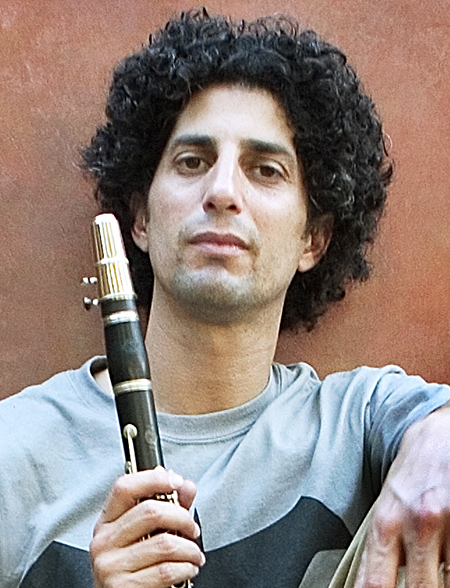 GUSTAVO BULGACH at the Town Center (Encino)
GUSTAVO BULGACH at the Town Center (Encino)
Accomplished Klezmer musician and bandleader GUSTAVO BULGACH will be our host at the Town Center 5 in Encino. Born and raised in Buenos Aires, Bulgach was inspired at an early age by the religious and secular life of the Argentine community. Now based in L.A., Bulgach travels the globe uplifting audiences with a vibrant, soulful Klezmer he terms the “soundtrack of the Diaspora.” Bulgach has been a longtime member of the House of Blues Foundation house band backing artist such as LITTLE RICHARD, TAJ MAHAL, and THE WAILERS. His own outfit, KLEZMER JUICE, was featured in the Hollywood mega hit movie THE WEDDING CRASHERS featuring Owen Wilson and Vince Vaughn.
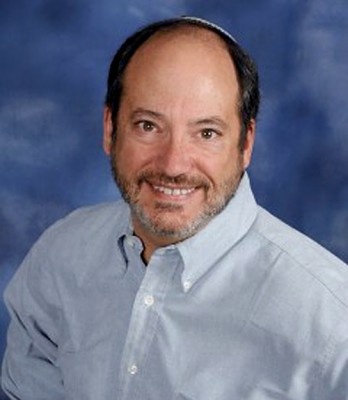 Cantor PAUL BUCH at the Claremont 5 (Claremont)
Cantor PAUL BUCH at the Claremont 5 (Claremont)
Cantor PAUL BUCH has served Temple Beth Israel in Claremont since 2003. He came to the cantorate after a 25 year career in TV and film production in Los Angeles, New York, and Portland. In addition to his cantorial duties, Buch is President of the Claremont Interfaith Council and serves on the Faith-Based Roundtable of the Pomona Unified School District. He is also Chair of the City of Claremont’s Human Relations Committee and serves on an advisory committee at the Claremont School of Theology. This will be his third consecutive year as our Fiddler host in Claremont!
HOOLIGAN SPARROW Filmmaker in Person at the Monica Film Center.
HOOLIGAN SPARROW filmmaker Nanfu Wang will participate in a Q&A at the Monica Film Center after the 11 AM screening on Saturday, December 10.
LAEMMLE LIVE New Performing Arts Series at the Monica Film Center Launching January 22, 2017
The Laemmle Foundation presents LAEMMLE LIVE, a new performing arts series at the Monica Film Center. Emerging artists and professional performers from local schools and organizations will celebrate our diverse community with live performance.
In our inaugural year, LAEMMLE LIVE’s free monthly Sunday morning performances will turn the Monica Film Center’s mezzanine lounge into a salon style venue and serve as a potential pilot for live performance programs at other Laemmle locations throughout Los Angeles — delivering an alternative community arts experience — inviting our Los Angeles neighbors into our Laemmle living room.

LAEMMLE LIVE’S first concert will feature musicians from Santa Monica High School’s Chamber Orchestra on January 22, 2017.
Future program partners include Lincoln Middle School, SO-LA Music Academy, Street Symphony, McCabe’s Guitar Shop and Elemental Music.
LAEMMLE LIVE will be a place for cultural intersection and engagement with social issues that matter to the community. Mindful that Santa Monica can be a place where privilege lives next door to a growing homeless population — LAEMMLE LIVE invites high school performers to inspire underserved neighbors and welcomes Street Symphony musicians who state “…we bring music to lift up the brave stories and voices of people who, although living in an impoverished situation, are in no way impoverished in spirit.”
“Live performance is a natural sequel to ART IN THE ARTHOUSE, a program that delivers a unique art-viewing experience by reclaiming wall space throughout our theaters for the display of fine art.” says Greg Laemmle, Laemmle Theatres President.
Winter-Spring
2017 Calendar
Sun Jan 22, 2017 11 AM — Samohi Chamber Orchestra
Joni Swenson, Jason Aiello, Directors
Sun Feb 5, 2017 11 AM — Sol-La Music Academy Chamber EnsembleMargaret Lysy, Founder and Artistic Director
Sun Mar 5, 2017 11 AM — Lincoln Middle School Madrigal Singers
Vanessa Counte, Director
Sun Apr 30, 2017 11 AM — Street Symphony
Vijay Gupta, Founder and Artistic Director
- « Previous Page
- 1
- …
- 57
- 58
- 59
- 60
- 61
- …
- 74
- Next Page »

